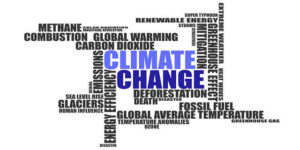If we neglect the time required to let the atmosphere heal from the damage caused due to Global Warming, then the process is reversible. Following are the 10 Steps to Reverse Climate Change.
1. Reduction of Food Waste
According to research, about one-third of the total food produced in the farms or even food s.industries fails to reach the dining table. The wasted food releases about 4.4 gigatons of Carbon dioxide into the atmosphere that accounts for approximately 8% of the total greenhouse gases emission. One of the most important steps that can be taken is to prevent the wastage of food before it happens. Dispensing the undesired food will greatly reduce CO2 emissions.
2. Adopting Plant-Rich Diet
The elevating livestock contributes to approximately 15% of the total emission of greenhouse gases globally. The digestion process in cattle leads to the generation of a greenhouse gas called Methane and the land used for the related consumption of energy produces CO2. If we count fertilizers too, then Nitrous Oxide is also added to the list. From the limited options to overcome this problem, eating lower on the food chain will contribute to lowering emissions.
3. Construction of Smart Highways
Highways are not a problem in themselves, but they can give rise to problems faced by vehicles running on them as pollution, long traffics on highways, and accidents look like the personification of the unendurable. Smart highways will reduce CO2 emissions from vehicles. The availability of solar charging stations can fuel electric vehicles. The light provided on the patches of roads to be made of PV panels.
4. Increasing Bamboo Plantations
Apart from providing food, boats, fabric, charcoal, and furniture, bamboo quickly confiscates carbon through the process of photosynthesis. Bamboo can be utilized in place of high-emission materials as it is strong and durable. Moreover, bamboo can survive on uncongenial lands, restoring soils and can thrive on storing carbon. Bamboo can be harvested and left for growth until maturity over 4-8 years. Increasing bamboo plantation can really help in reversing climate change
5. Use of Electric Vehicles
Cars are a major source of greenhouse gases emissions, and there are billions of them running on the roads daily. The shift in fuel usage from gas to grids can drastically reduce emissions and prevent air pollution. Electric vehicles have the added advantage of lower emissions over traditional cars, and in addition to that, the latest technology has renewable advantages. The only drawback is the high-cost one needs to pay for purchasing an EV, which will eventually be lowered in near future.
6. Rooftop Solar
The use of fossil fuels for survival is now enlisted in an era that is going to change in near future. Solar Photovoltaics, the elements in Solar Panels that convert the energy from the sun to electricity are the global requirement at present. The distributed systems of not more than 100 KW accounted for approximately 30% of the total capacity of the worldwide installed solar panels. Using Rooftop Solar will help in fulfilling the daily household electricity requirements without the emission of Greenhouse gases.
7. Household Recycling
The traditional concept of 3Rs, Reduce, Reuse, and Recycle is still in power and works fine for household recycling measures. Try to get the broken or useless repaired if possible instead of purchasing a new one as it will add up to the household waste. Recycling drastically helps in the reduction of the emission of greenhouse gases as the production of new products from the old ones requires less amount of energy. (10 Steps to Reverse Climate Change)
8. Wood for Construction
Steel and Concrete became the major materials of construction right from the age of the Industrial Revolution and as a result, the usage of wood was reduced significantly. However, the use of mass timber is dramatically starting to alter the usage of steel and concrete. Mass timber is being utilized in some cities around the globe for serving the purpose of construction of safe, strong, and easy to construct tall buildings.
(10 Steps to Reverse Climate Change)
9. Solar Farms
Solar farms are large-scale arrangements of hundreds, thousands, and in some cases, millions of solar panels installed on a farm. They are capable of generating hundreds of megawatts of electricity without emission of harmful gases. Public investments should be attracted to serve the purpose as it will definitely help in the reversal of Global Warming. Another added advantage of Solar farms over rooftop solar panels is that the cost of installation per watt is comparatively less in the case of Solar farms.
10. Tropical Forest Restoration (10 Steps to Reverse Climate Change)
The large-scale clearing, degrading, and depletion of flora and fauna of tropical forests in recent decades have contributed to the major cause of Global Warming. Earlier, tropical forests were covering about 12% of the total land area of the world, and now, they are only covering 5%. Restoration of tropical forests is required in order to reverse Global Warming, though slowly, but steadily. The restoration of tropical forests will help in the reduction of CO2 discharged into the atmosphere.
These are the 10 Steps to Reverse Climate Change
Image by Pete Linforth from Pixabay







